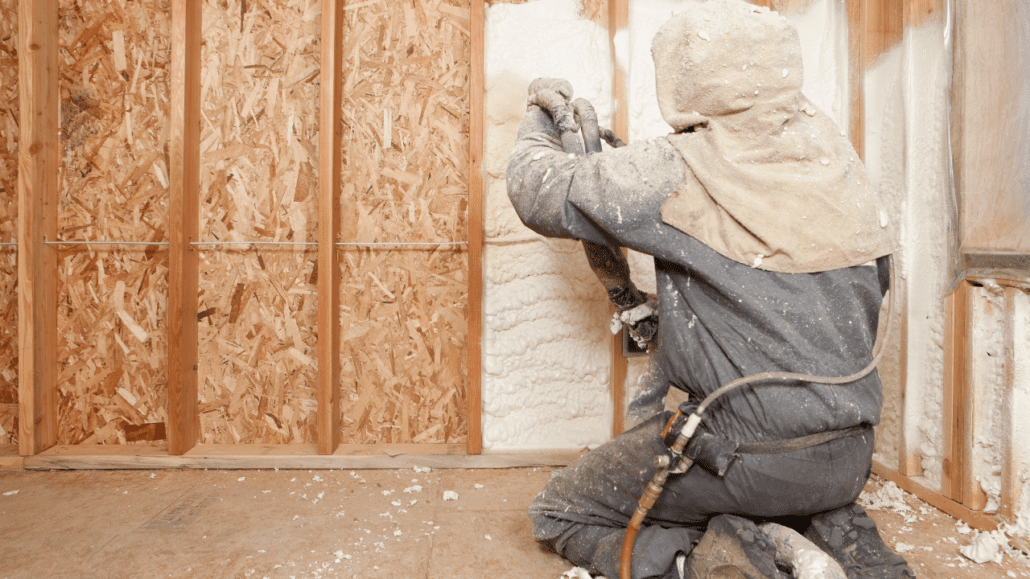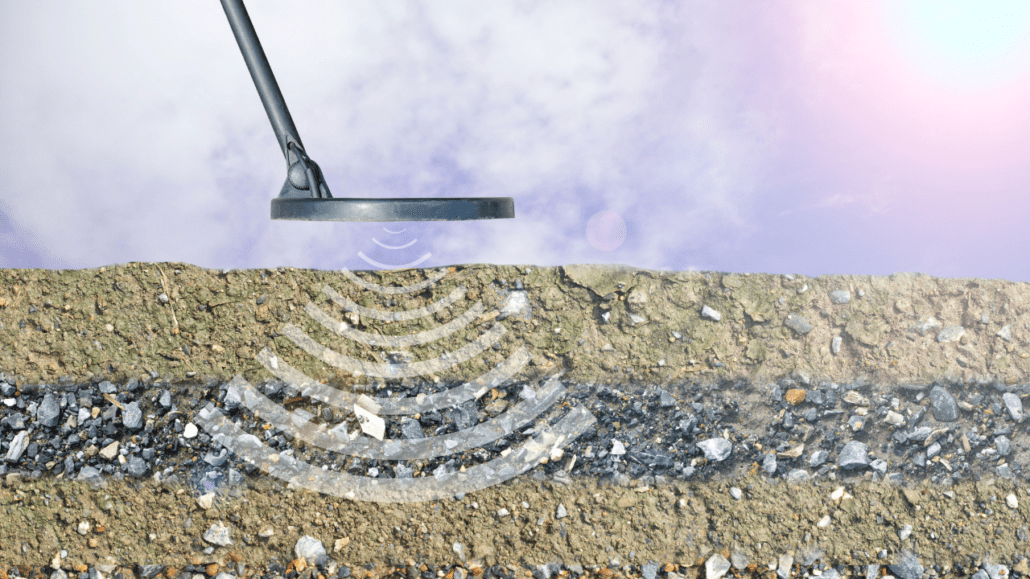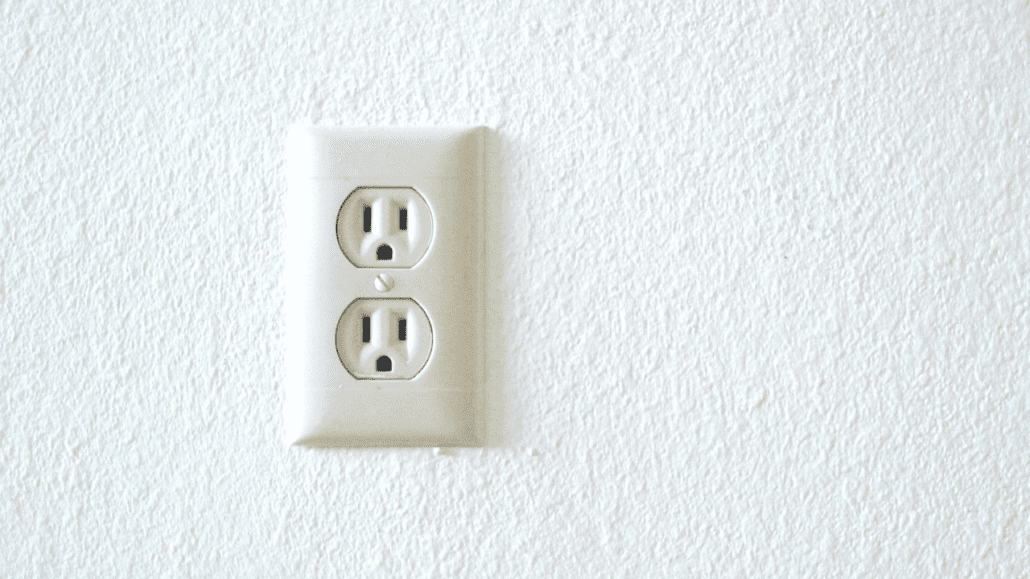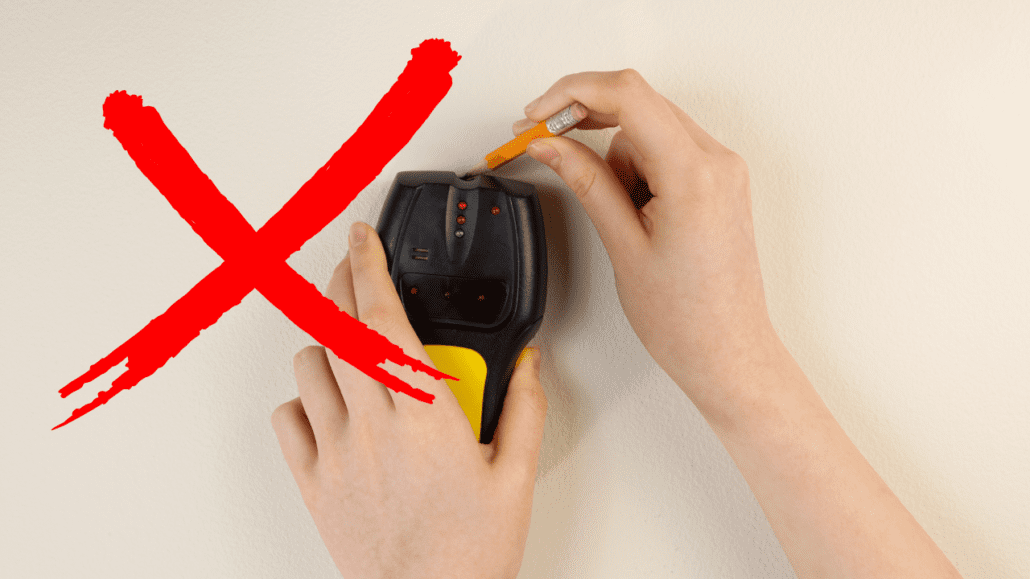How To Find a Stud in a Plaster Wall
It’s pretty simple to find a stud in common drywall. But on some older homes from the mid-1970s and prior, there’s a good chance you may have plaster walls instead. Learning how to find a stud in a plaster wall takes some patience, but we have a few tricks up our sleeve that will save you time.
Back in the day, home builders had to trowel the wall finish on with plaster over a lath base (kind of like how stucco is applied). These were “wet” applied walls (not to be confused with the similar-sounding “wet wall” that contains plumbing pipes).
Plaster can be too thick or dense to find a stud with common stud finders, which is probably why you’re finding that these don’t work. And if the lath is a metal wire type, instead of older wood lath, a stud finder will produce false readings.
So what’s the solution to finding studs in older homes? Some people say to use a magnet, but that also won’t work if you have metal lath. But don’t worry— there are still ways to locate studs in these walls!
RELATED: CUT ATTIC TRUSSES 101
Here are five ways to find a stud in a plaster wall:
How To Find a Stud in a Plaster Wall

Vertical studs, wooden beams, and plaster make up the structure of older homes. This means that your standard stud finder won’t be able to detect a change in density because it’s all dense.
Anytime you want to hang something on your wall— whether it’s 0.5 pounds or 50 pounds— you want it to be attached to a stud. Studs are the wooden or metal beams that support the walls in your house. Imagine hanging a 50 pound framed piece of artwork on nothing but drywall.
It wouldn’t stay there for long!
Ensuring your wall décor is anchored to these studs means they’ll stay in place until you decide to take them down again. You can simply use a stud finder to find the perfect spot these days, but this won’t work reliably on older homes.
So we have to find creative ways to figure out where these studs are.
With a couple of household items and a keen eye, you’ll be able to find your studs in minutes.
RELATED: ARE HOME INSPECTIONS WORTH THE COST?
1. The Good Ol’ Fashion Knock

This is the method you’ll find most professionals using to locate a stud in an old home. A simple double tab with your knuckle against a wall is enough to do the trick.
You want to look out for a faint echo behind each knock. Move horizontally along the wall (giving a couple of raps along the way) until that echo dissipates. Eventually, what you’ll hear instead is a high pitched sound reverberating off the studded post. You’ll literally hear a change in sound. That means you’ve found the stud!
Take your time with this method. Figuring out how to find a stud in a plaster wall this way takes some patience because the changes in density can be difficult to discern. Try to find a few studs along the same wall and mark them as you go. If you notice they’re generally 16-24″-inches apart, then you’ve definitely found your marks.
Pro-Tip: Use a trim nail to double-check. Mark where you think you’ve found the stud, and slowly hammer the nail into that area. It should only go in about half an inch if there’s a stud there.
RELATED: 20 THINGS YOU SHOULD KNOW ABOUT YOUR HOME INSPECTION
2. Use a Metal Detector

Some people suggest using a magnet to find the screws in your home’s studs. This can work sometimes, and only if you use a heavy-duty (i.e. rare-earth) magnet.
The next best trick to find a stud in a plaster wall is to use a metal detector. If you have one lying around the house, use it to scan the wall to detect those screws.
We like the Zircon MetalliScanner® m40. It’s a handheld and rather affordable device that you can usually find locally at most big box stores.
Again, if your home is coated in metal lath, a metal detector can also give false readings. If this is the case, #3 will be your next best bet.
RELATED: IS YOUR HOME FIRE SAFE?
3. Measure From An Electrical Socket

Most electrical outlet receptacles (i.e. sockets) are fastened to a stud. So, if you take the cover off one of your electrical sockets, then the stud is pretty easy to spot. Be careful when you’re doing this, and ALWAYS turn off your breakers first when looking for studs this way.
Studs in older homes are generally 16 to 24 inches apart. Check which side of your outlet is attached to the stud and measure off the next 16-24 inches to find the next one. You can use any of the above methods to ensure you’ve found the next stud on your wall.
From there, write down how many inches it is from each stud. If it’s 16 inches (most likely), use a measuring tape to find the next one, then the next, and so on. If you need to find studs in another room in your house, it’s safe to assume they will also be 16 inches apart.
RELATED: WHY CARBON MONOXIDE DETECTORS ARE IMPORTANT
Why Won’t a Stud Finder Work on Plaster Walls?

Stud finders work in one of two ways. It uses an electrical sensor to determine:
- The density of your wall;
- Where there are nails driven into a stud.
As we mentioned, the plaster walls’ density is often too thick for a common stud finder to work. This density also hinders the electronic sensor’s ability to accurately pick up on nails in your stud. The magnet in a stud finder is simply not large enough, although some models include a “deep scan” function that may work, they usually provide mixed results with plaster.
Bottom line: As long as you work diligently, and with a little patience, you can find your home’s studs behind the plaster in a matter of minutes!







Leave a Reply
Want to join the discussion?Feel free to contribute!